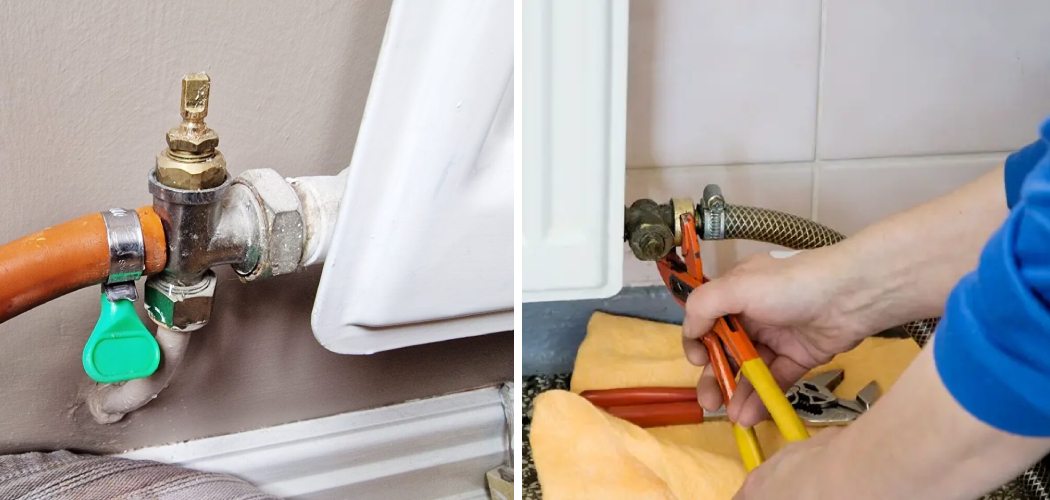Are you a homeowner looking to tackle a big home maintenance project? Or perhaps you are a landlord responsible for maintaining multiple properties and need help with drainboiler system upkeep. If so, this blog post is your one-stop shop for all things related to draining boiler systems.
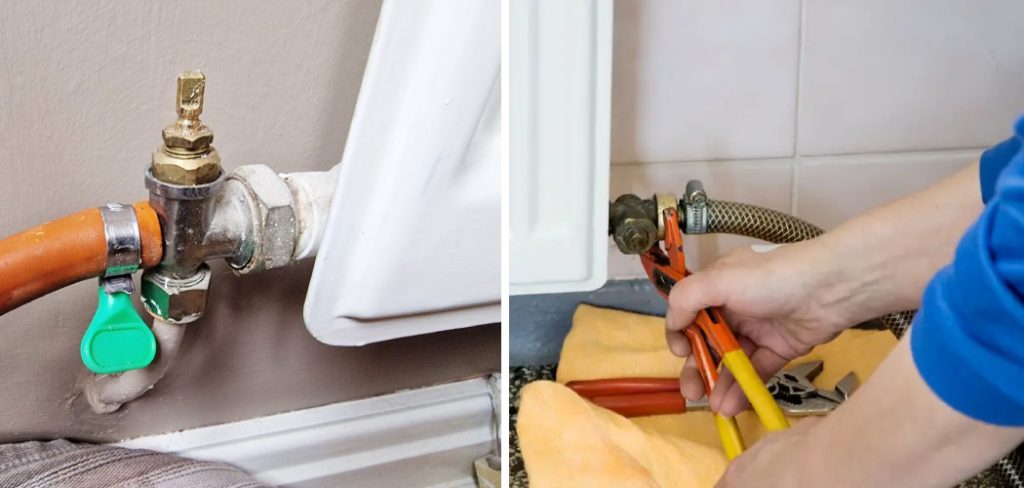
No matter the size of the job, proper maintenance of any boiler can go a long way toward avoiding costly repairs down the road and ensuring safe operation in the winter months.
Read on to find helpful advice on how to drain boiler system and safety tips on practical steps you can take today to ensure that your boiler system remains functioning safely and optimally.
13 Step-by-step Guidelines on How to Drain Boiler System
Step 1: Understand the Basics of Boiler Systems.
Before attempting to drain a boiler system, it is important to understand the basics of how it works. A boiler system consists of a boiler, water pump, pipes, radiators or convectors, and other components. The purpose of the system is to heat the home by transferring hot water from the boiler to each radiator or convector.
Step 2: Check the Pressure Gauge.
The pressure gauge is an important indicator of the pressure level in your boiler system. If it is too high, then you must drain some of the water from the system to lower it. You can check the pressure gauge by opening the pressure relief valve, which should be marked with a “P” on your boiler. This valve is often located near the top of the boiler or on the side.
Step 3: Locate the Drain Valve.
Once you have checked and understand the pressure gauge, locate the drain valve on your boiler system. This can usually be found near the bottom or side of the tank, but this may vary depending on your boiler model and make. You might need to consult the manufacturer’s manual for specific instructions.
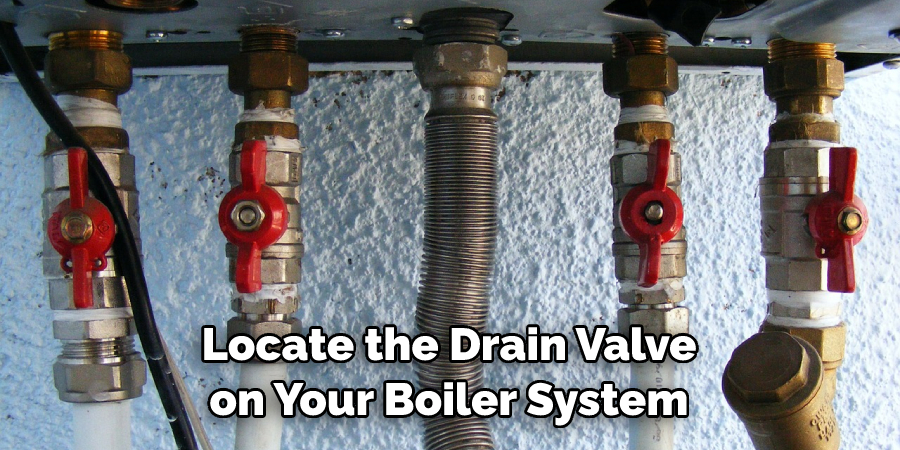
Step 4: Open the Drain Valve Fully.
Once you have located the drain valve, open it fully by turning it counter-clockwise until it stops (or slightly beyond). This will allow all water to begin draining out of the system. You can use a bucket or other container to catch the draining water to prevent it from spilling onto the floor. It is best to open the valve slowly at first, and then fully once you are sure that no water is spilling onto the floor.
Step 5: Monitor Drainage.
Once the draining has begun, keep an eye on the gauge to ensure that the pressure is decreasing steadily. If it does not, you may need to shut off the valve slightly so that less water can be drained out at a time. You will also want to keep an eye on the bucket or container that you placed underneath the valve to catch any excess water.
Step 6: Continue Draining Until Desired Pressure is Reached.
Keep draining until you reach your desired pressure level as indicated by the gauge. It is important to note that if you over-drain the system and reduce pressure too much, you could cause damage to internal components such as valves and gaskets. This could result in costly repairs or replacements. It is best to err on the side of caution and stop draining once you have reached your desired pressure level.
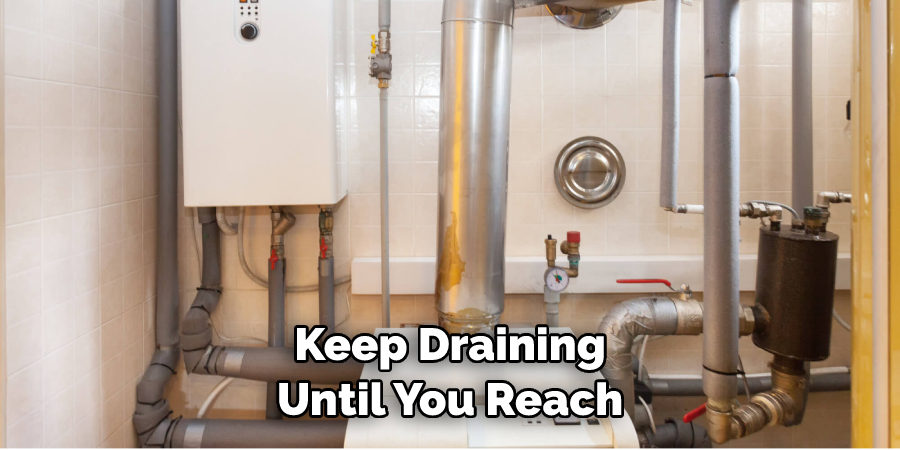
Step 7: Shut Off Valve Once Desired Pressure Level is Reached.
When your desired pressure level has been reached, turn off the drain valve by turning it clockwise until it stops. You can now close the pressure relief valve if you had opened it earlier to check the gauge. This will prevent any further water from escaping the system. You should also turn off the water pump to ensure that no more water can enter the system.
Step 8: Refill the System with Water.
Once you have shut off the valve, refill the system with fresh water according to the manufacturer’s instructions. This will ensure that internal components are not damaged due to a lack of water pressure. You should also check for any leaks or other issues that may have been created during the draining process.
Step 9: Check For Leaks Once Filled.
After filling the system, check all valves and gaskets for leaks or any other signs of wear and tear. If any major issues are noticed, contact a professional repair technician right away as this could lead to bigger problems in the future if left unchecked. You may also want to check the pressure gauge one last time, just to be sure that the desired level has been reached.
Step 10: Turn the Boiler On and Monitor the Pressure Gauge Closely.
Once you have refilled the system, turn the boiler back on and monitor the pressure gauge to ensure that it is not dropping too quickly. If it is, you may need to add more water to maintain an optimal pressure level. You should also check the gauge regularly over the next few days to ensure that it does not drop below the desired level.
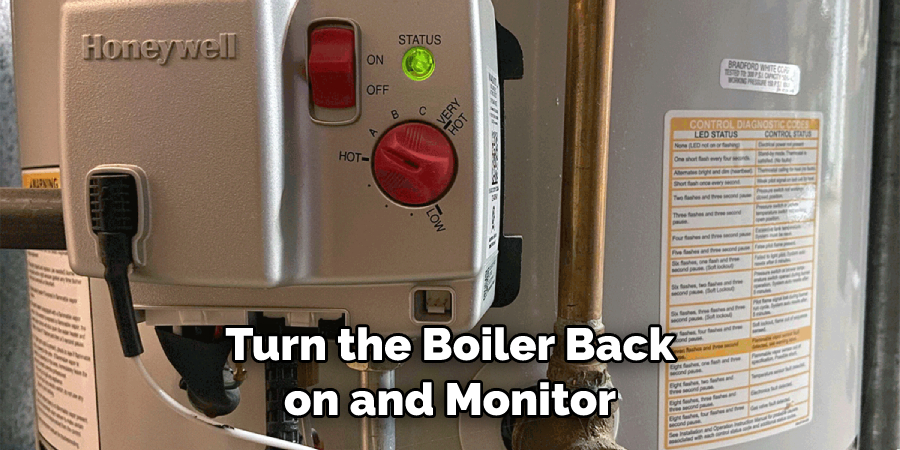
Step 11: Check Radiators/Convectors for Proper Heating.
Once your desired pressure level has been reached and maintained, check all radiators or convectors for proper heating. This will ensure that your system is functioning optimally and safely. You should also check the system on a regular basis to ensure that it is always in good working condition.
Step 12: Bleed Radiators/Convectors as Needed.
If any of your radiators or convectors are not heating up properly, then they may need to be bled by releasing trapped air through the valve at the top of each unit. A professional technician may be needed to help with this process. But if you have the knowledge and tools, then it can be done on your own.
Step 13: Make Sure to Check the System Regularly.
Finally, it is important to regularly check your boiler system’s pressure gauge and all radiators or convectors to ensure that everything is functioning properly and safely. This will help prevent any major issues from developing over time. After all, regular maintenance and check-ups are the best way to extend the life of your boiler system.
By following these 13 simple steps on how to drain boiler system, you can easily drain your boiler system in order to keep it safe and functional for many years to come. Be sure to contact a professional repair technician if you have any doubts or questions about the process. With proper maintenance and care, your boiler system should remain functioning optimally for years to come!
Do You Need Professional Support?
If you need help with draining or refilling your boiler system, then it may be time to contact a professional repair technician. A qualified technician can provide the necessary guidance and advice needed to ensure that your boiler system is always functioning optimally and safely. They can also answer any questions you have about safety protocols or maintenance methods for keeping your boiler running as efficiently as possible.
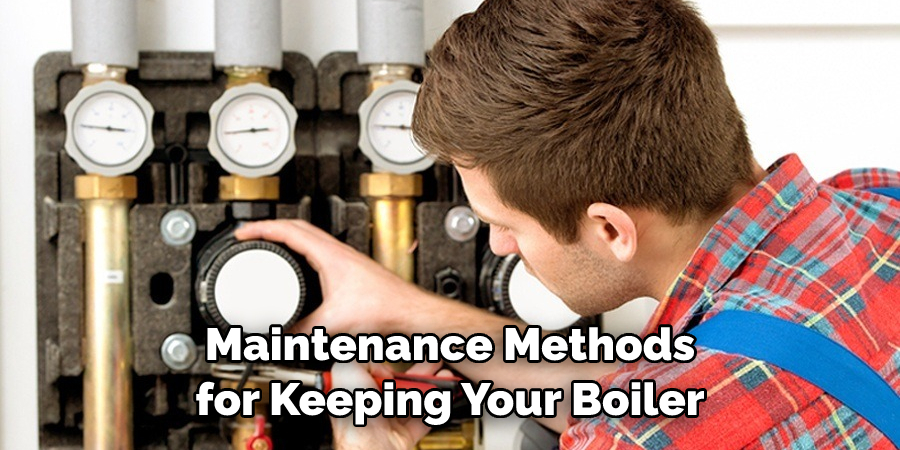
Frequently Asked Questions
Q: How Often Should I Drain My Boiler System?
A: It is recommended that you drain your boiler system once every year or two. This will help keep the system running smoothly and efficiently. If your boiler is used frequently, then you may wish to drain it more often.
Q: What Type of Tools Will I Need?
A: Generally, you will only need basic tools such as a wrench and a screwdriver. However, if you have any doubts or questions about the process, then it is best to contact a professional repair technician for assistance.
Q: Is It Safe to Drain the Boiler System on My Own?
A: Yes, it is perfectly safe to drain the boiler system on your own as long as you follow the manufacturer’s instructions. However, if you have any doubts or questions about the process, then it is best to contact a professional repair technician for assistance.
Q: What Are Some Common Issues That Can Arise When Draining a Boiler System?
A: Some common issues that may arise when draining a boiler system include leaks due to worn gaskets and valves, low-pressure levels, air bubbles in the pipes, and improper heating of radiators or convectors. If any of these issues occur, then it is best to contact a professional repair technician for assistance.
Conclusion
The process of draining a boiler system may seem daunting, but it’s certainly doable. Anytime you’re dealing with water and electricity, safety should always be top of mind—both during the draining process itself and while the system is offline.
Taking the time to go through the proper steps will ensure that your boiler system operates safely and efficiently after refilling. Even if you haven’t drained a boiler before, following this guide on how to drain boiler system can help make sure you stay safe while ensuring that your system continues running at peak performance.
If you ever have any doubts about what to do with your boiler, seek out professional help for guidance or advice. Safe tinkering is always fun, so don’t be afraid to get your hands wet!

